2020 has been a year like no other, with a great many changes in the way we work, learn, shop and gather with friends and family. Safety and prevention of spread is now a primary concern for everyone, including businesses and organizations who open their doors to staff, customers, patients and students. As Fall and Winter approaches, and the weather temperatures drop, most of us tend to spend 90% of our time indoors. Spending that much time indoors can cause a host of problems for those with allergies and lung or respiratory disorders. Why? According to the EPA, “indoor air can be as much as 5 times more polluted than outdoor air”. And the Fall and Winter months will not bring relief when it comes to the pandemic.
“The cold in northern parts of America will push people back inside, where the virus has a much easier time spreading than the outdoors. Families and friends will come together for the holidays. A flu season could strain the health care system further.”
– Vox.com
While we all do our best to implement CDC recommended guidelines of mask wearing, social distancing and regular hand sanitizing and washing, many still fear the implications of the coming months. Considering those growing concerns, CPS is happy to introduce new products and services to further ensure safer, cleaner air and a reduction in airborne contaminants, bacteria, viruses and mold.
In response to our clients’ need we have added two more products to our commercial and industrial HVAC services. Over the past few months, our team have been installing Air Scrubbers and UV Lights into businesses, schools and health facilities around Central KY. While we cannot guarantee a Covid-Free environment, these two products can do much to reduce risk as well as remove mold, allergens, and pollutants from the air so you and your staff can breathe a lot easier. (Pun intended.) How do these two systems work?
Air Scrubbers

An Air Scrubber, which has been used for decades, is an air-cleaning device that attaches directly to the ductwork of your HVAC system. It uses a search-and-retrieve method to eliminate contaminants in indoor air including air pollution, VOCs, surface contaminants, pet dander, odors and dust. As the air flows through your ductwork system, the air scrubber continuously produces negative air ions that are on a mission to search and bring back pollutants, bacteria and viruses in your air that are too small to be captured by your normal air filter.
How does this work? The Air Scrubber contains small metal tubes with a special coating, that are arranged in a shape of a honeycomb. The air travels through these tubes and then passes a section that contains a UV light, creating negative ions that are sent out to clean your air. When the negative ions find other charged particles (such as bacteria, pollen, contaminants), they bond to these, creating much larger and heavier particles that can no longer float in the air so they begin to fall. Then your air handler’s fan will pull these larger particles into your ductwork system and ultimately dispose of them via your air filter.
During the first week of utilizing an Air Scrubber you may find an increase in dust, which will need to be vacuumed or mopped up. After the first operation, you will see much less dust and soon you may notice a decrease of your need to dust your surfaces. The Air Scrubber is an effective tool to help prevent viruses, seasonal and mold allergies, and pollution.
UV Lights
Ultraviolet (UV) means “beyond violet”; and since violet is the highest frequency of visible light, UV light is mostly invisible to the human eye. Most UV light comes from rays of sun, which can cause sunburn and skin damage, however most of the UV radiation is absorbed into the atmosphere. When used in the home or business, UV lights are a type of electromagnetic radiation, similar to those used in black lights, at such a low level that they do not present a hazard.
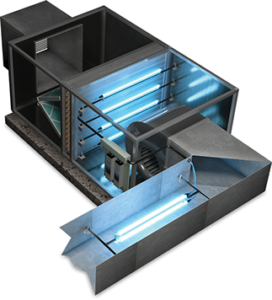
The three types of UV Lights Wavelengths are UV-A, UV-B and UV-C. The UV-C is the most powerful of the UV light with the shortest wavelength, thus has the power to destroy microorganisms by scrambling their DNA. Thus, this is the type of UV light to be used for air purification, sterilization in and disinfection (in laboratories, hospitals, food processing and water treatment facilities). And now UV Lights have been used to purify and clean indoor air.
When installed in your HVAC system, UV lights can keep surfaces and indoor air clean and disinfected. Installing an UV light in an indoor air handler can kill a large percentage of microbes as they pass through the system, which has been used for years for allergy sufferers. UV Lights are a chemical-free way to kill and sterilize mold, bacteria and other organic microbes that pass through your HVAC unit. The UV Lights effectively scramble their DNA, so these organisms are unable to function normally at a cellular level, thus neutralizing them.
Your CPS technician can install a Biocide Chamber UV Lamp in your air conditioning unit, which works as a sanitation device, nearly eliminating bacteria and mold around your air conditioning coil before the air can be recirculated in your business. Although there is currently limited published data about the use of UV lights for coronavirus disinfection, the FDA published an article in August 2020 published some answers to common questions regarding UV Lights:

“UVC radiation is a known disinfectant for air, water, and nonporous surfaces. UVC radiation has effectively been used for decades to reduce the spread of bacteria, such as tuberculosis. For this reason, UVC lamps are often called “germicidal” lamps. UVC radiation has been shown to destroy the outer protein coating of the SARS-Coronavirus, which is a different virus from the current SARS-CoV-2 virus. The destruction ultimately leads to inactivation of the virus.” – FDA.gov
CASE STUDY:
Comfort and Process Solutions has recently serviced S&S Tire Corporate office in Lexington KY to install Air Scrubbers in every one of their heating and cooling system units in each office space. This layer of added protection offers improved quality of air for their employees.
If you’d like to know more about our UV Lights and Air Scrubber products, and the installation process of each, please reach out to our staff at (859) 294-4400 or fill out our form to request a quote.
Schedule your Preseason Preventative Maintenance to Get Ready for Winter
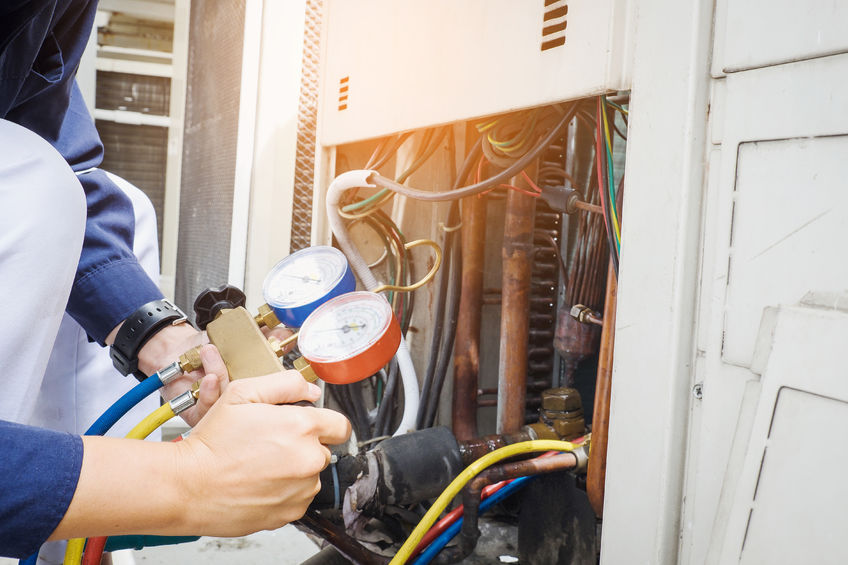
Now is the time to schedule your Fall PM to make sure your heating systems are ready for the winter ahead. Our Preseason PM includes checking, cleaning and replacing of the following: filters, electrical wiring, electrodes, sparks, flame rods, inspection of boilers, and heating units. For those using a split system, we inspect, test and then manually change over the cooling system to convert to heating with a coal or oil-fired boilers system. For those in the industrial and manufacturing industries, who may be using heating or cooling of their systems throughout the year, now is a good time to fully inspect the system as well as the energy efficiency.
Some of the benefits of a regular scheduled PM are as follows:
- Longer Life Cycles
- Optimum performance & efficiency’s
- Prevent untimely break downs
- Scheduled down times for repairs
- Reduce costly emergency repairs
We are open and ready to serve our clients. We have not closed our business even one day since the start of the pandemic as our services are essential to our businesses. Our offices are currently closed to visitors and we have implemented the recommended safety precautions to keep our staff safe and healthy. Contact us to schedule your PM!
CASE STUDY: Fayette County School District
We were hired to troubleshoot and replace the fans on their rooftop cooling towers. Instead of replacing the entire system, our team went above and beyond to special order a custom-made fan system to fit to their particular cooling tower model. We could not order parts for this particular model as they were no longer made or sold anymore. The project included replacing two fan sections, which saved the school district over $100,000. (See photos below of the project).
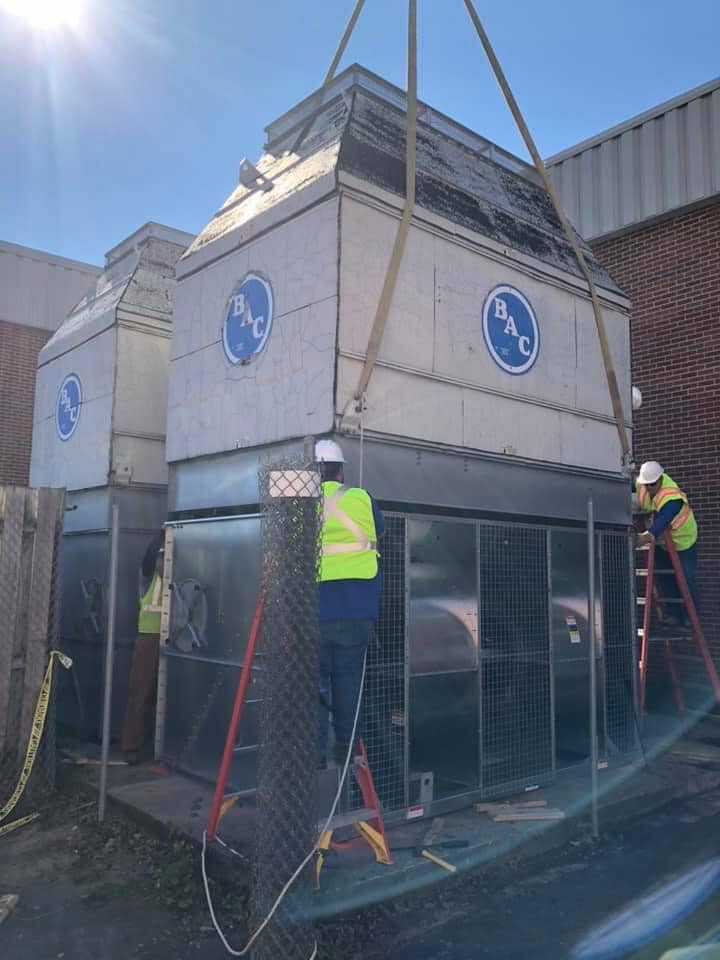
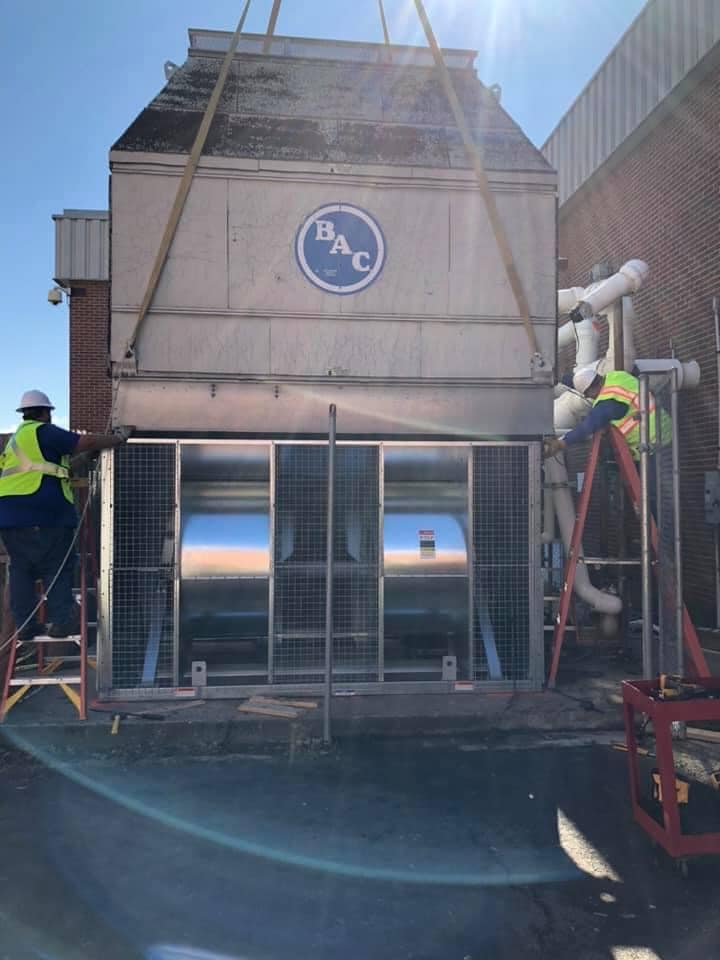
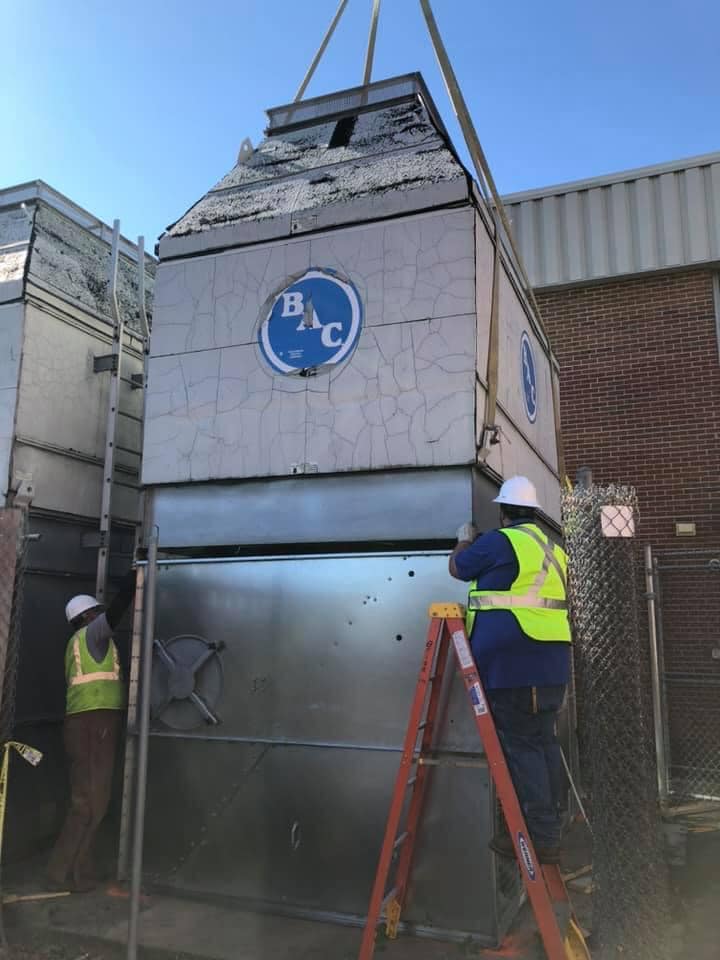








1 Comment